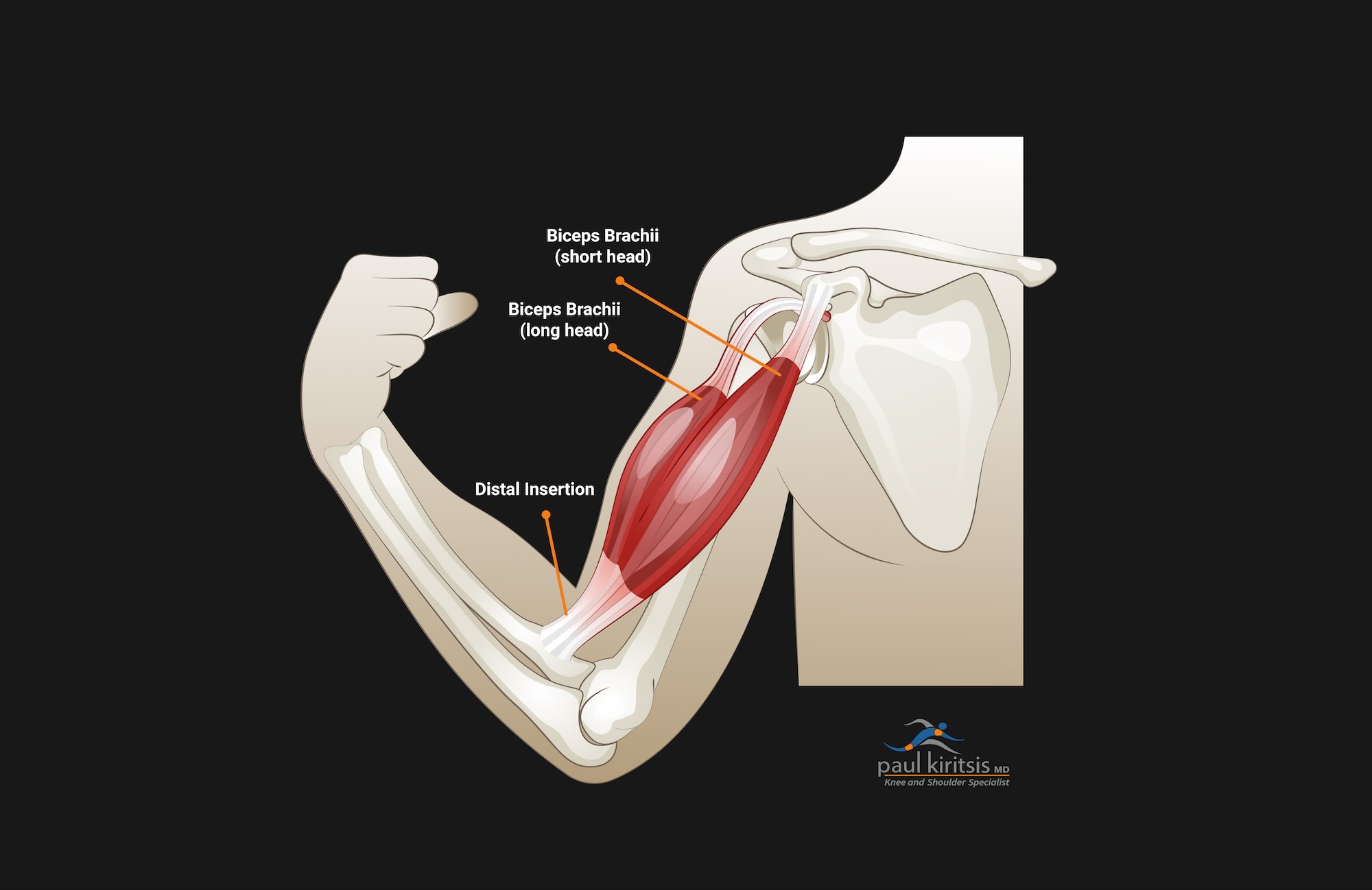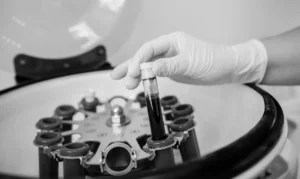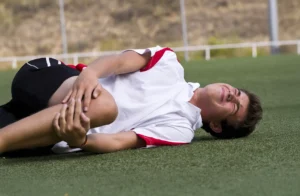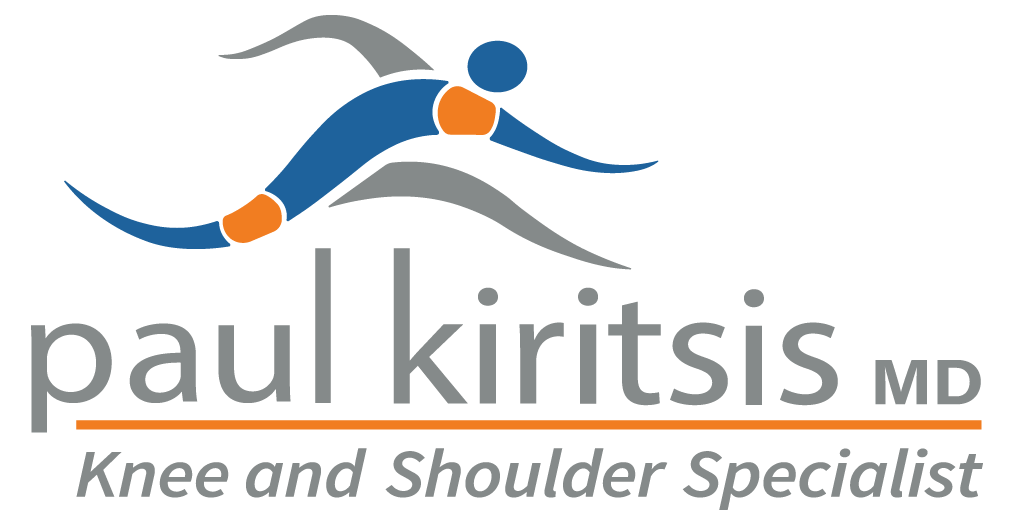Can I still workout with a torn bicep tendon? – If you’re wondering this, you are not alone. In this post I will go through which workouts can help and which ones might hinder your healing, helping you stay on track with your fitness goals sensibly. Learn about practical tips for sneaking in safe, appropriate exercises into your recovery process.
Key Takeaways
- A torn bicep tendon, occurring at the shoulder or elbow due to heavy lifting or overuse, may require surgical repair if it escalates from a partial to a complete tear.
- Symptoms of a torn bicep tendon include a ‘pop’ sound, pain, bruising, swelling, and a muscle deformity. Immediate medical attention is necessary for diagnosis and treatment.
- Recovery includes nonsurgical methods like physical therapy or surgical options if needed, with exercises to strengthen the bicep tendon and adaptations to workout routines post-recovery to prevent future injuries.
Understanding Bicep Tendon Tears
Imagine the bicep muscle as a sturdy rope, with the bicep tendon acting as the anchor points connecting it to the shoulder and elbow. A bicep tendon tear is an injury to these anchor points, causing them to partially or completely detach from the bone. These tendon tears can happen either at the shoulder (proximal tears) or at the elbow (distal biceps tendon tears).
Partial tears can escalate to complete ruptures if not managed properly, leading to significant loss of strength, and usually necessitating surgical repair. These tears are often the result of rigorous activities like lifting heavy items or overusing the bicep muscle, particularly during unbalanced and uncoordinated gym exercises.
The upper end of the biceps muscle is attached to the shoulder by two tendons – the long head attaching to the glenoid and the short head to the coracoid process. A variety of symptoms can arise from damage to these tendons, which we will delve into momentarily.

Signs and Symptoms of a Torn Bicep Tendon
When a bicep tendon tear occurs, the immediate signs can be quite startling. You might experience:
- A sudden ‘pop’ sound
- Visible bruising and swelling in the affected area
- A bulging muscle in one part of your upper arm, while a gap appears in another, indicating where the tendon has torn.
The symptoms of a torn biceps tendon can vary depending on the severity of the tear. Some common symptoms include:
- Intense pain immediately after the tear, which may subside over a few days
- Persistent discomfort when the arm is bent, or the biceps muscle is flexed
- Noticeable arm muscle deformity in the case of a complete tear
- Limited use of the long head tendon, leading to cramping, fatigue, and weakness
If you are experiencing any of these symptoms, it is important to seek medical attention for a proper diagnosis and treatment.
When to Seek Medical Help
Experiencing symptoms such as bruising along the upper arm, muscle cramps in the biceps during arm use, sharp pain, or difficulty rotating the arm should prompt a visit to a medical professional. Other red flags include an abnormal bulging of the biceps, known as a ‘Popeye muscle’, or a discernible ‘pop’ or ‘snap’ in the arm, which may indicate a torn bicep tendon.
Should you observe any weakness in your shoulder, elbow, or forearm post-injury, it warrants medical attention, as it may be indicative of a bicep tendon tear. In these instances, the next step is to consult your orthopedic surgeon who will likely use diagnostic tests such as an X-Ray, ultrasound, or MRI scan to confirm the diagnosis.
Can You Exercise with a Torn Bicep Tendon?
Is it possible to uphold an active lifestyle despite having a torn bicep tendon? While it may seem counterintuitive, certain at-home exercises, when performed correctly, can help alleviate pain and aid in the healing process of a torn bicep tendon. Nonetheless, discerning which exercises are safe and which ones to steer clear from is crucial.
Safe Exercises to Perform
If you’re recovering from a torn bicep tendon, certain physical therapy exercises can be beneficial. These include:
- Biceps stretch
- Elbow flexion and extension
- Shoulder flexion
- Side-lying external rotation
The biceps stretch should be performed three times daily, holding each stretch for 15-30 seconds. This simple yet effective stretch can aid in your recovery. To maintain arm strength and flexibility, elbow flexion and extension exercises should be performed 15 times for two sets, twice daily.
Other exercises like shoulder flexion, which involves raising the injured arm forward and overhead, can improve shoulder mobility and activate the bicep. These should be performed eight to 12 times, two times daily. Additionally, isometric bicep contractions are safe exercises that activate the bicep without excessive strain.
Exercises to Avoid
Though staying active during recovery is paramount, it’s wise to avoid certain exercises that could exacerbate your biceps tendon damage. This includes any exercises that put strain on your biceps, such as lifting heavy weights.
Specifically, the following exercises should be avoided if you have a torn bicep tendon:
- Heavy lifting exercises like deadlifts and power cleans
- Direct arm work such as bicep curls and tricep pushdowns
- Exercises that require overhead lifting like shoulder presses
- Certain bodyweight exercises like pull-ups or chin-ups
Avoiding these exercises will help prevent further aggravation of the torn bicep tendon.
Recovery Process and Rehabilitation
Recovery from a bicep tendon tear involves both nonsurgical and surgical treatments. Nonsurgical methods such as anti-inflammatories and physical therapy can be effective, particularly when dealing with rotator cuff injuries, including a rotator cuff tear.
On the other hand, surgical options like biceps tenodesis and arthroscopic surgery are recommended for persistent pain, muscle cramping, and full strength recovery, especially in athletes, body builders, or manual laborers. Physical therapy is a crucial element in the recovery process, helping patients regain strength, mobility, and function post-injury or surgery.
Patients generally regain full range of motion within 4 to 6 weeks following surgery. However, a full recovery period can take up to 6 months.
Preventing Future Bicep Tendon Injuries
Preventing future bicep tendon injuries is an integral part of maintaining your fitness and health. Incorporating exercises such as hammer curls, standing resistance-band hammer curls, and standing cable rope hammer curls can help strengthen the bicep tendon and reduce future injuries.
Practicing correct lifting techniques, taking frequent breaks, warming up properly, and maintaining shoulder, elbow, and forearm strength are crucial preventative measures. Additionally, avoiding repetitive overhead lifting, general shoulder overuse, and being cautious with lowering heavy items can help prevent bicep tendon ruptures.
Particularly for older adults, it’s recommended to avoid lifting excessively heavy objects to prevent bicep tendon injuries. Being aware of the amount of resistance on the bicep, elbow, and shoulder joints can also be effective preventive strategies for bicep tendon ruptures.
Adapting Your Workout Routine
Once you’ve recovered from a bicep tendon tear, modifying your workout routine is of utmost importance. Focus on restoring range of motion and strengthening supporting muscles to prevent stress on the biceps brachii.
Consider incorporating exercises that target scapular and glenohumeral stabilizers to aid recovery and avoid impacting the injured biceps brachii. Keep in mind that a patient’s prior physical activity history and level of motivation can hasten recovery and ease the transition of adjusting their workout routines.
Summary
When wanting to get back in the gym with a bicep tendon tear it is important to understand the injury, recognize the symptoms, and seek out your orthopedic surgeon with any questions for professional medical advice and help. Staying active through safe exercises, following a determined rehabilitation process, and preventing future injuries are integral to a successful recovery. While a bicep tendon tear can be a daunting setback, with proper care and a positive outlook, you can resume your active lifestyle.
Frequently Asked Questions
Can you lift your arm with a torn bicep?
If you tear your biceps tendon around the shoulder, you may experience pain and weakness when forcefully turning your arm from palm down to palm up. Most people can still function normally with a torn bicep and may only need simple treatments to relieve symptoms.
What causes a bicep tendon tear?
Bicep tendon tears are commonly caused by lifting heavy items, performing unbalanced gym exercises, and overusing the bicep muscle. These activities can put excessive stress on the tendon, leading to tears.
What are the symptoms of a torn bicep tendon?
If you experience a sudden ‘pop’ sound, visible bruising, swelling, muscle deformity, and persistent pain when bending the arm or flexing the biceps muscle, it may indicate a torn bicep tendon. Seek medical attention for proper evaluation and treatment.
How is a bicep tendon tear diagnosed?
A bicep tendon tear is diagnosed using X-rays, ultrasounds, or MRI scans. These imaging techniques help determine the extent of the injury and guide treatment.





